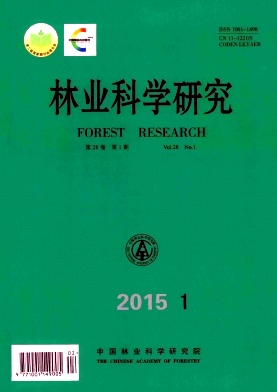| [1] |
清·顾观光. 神农本草经[M].北京:学苑出版社,2007. |
| [2] |
唐·苏 敬.新修本草[M].上海:上海科学技术出版社,1961. |
| [3] |
明·李时珍. 本草纲目:下册[M].北京:人民卫生出版社,1982. |
| [4] |
蒋 滢,陈 政. 松花粉的研究[J].氨基酸和生物资源,1988(1):8-10. |
| [5] |
全福秀. 天然马尾松花粉的成分分析研究[J].中成药,2001,23(12):902-904. |
| [6] |
何晓燕,孙雪圆,于智洋.松花粉的有效成分及药理作用[J]. 东北林业大学学报,2007,35(9):78-80. |
| [7] |
王 敏 .松花粉的成分及药理作用研究进展[J].安徽医学,2008,12(4):357-359. |
| [8] |
李 娜. 松花粉营养成分及生物活性的研究进展[J].安徽农学通报,2008,14(3):125-127. |
| [9] |
陈希根. 松花粉的开发利用[J].食品科学,1995,16(6):24-27. |
| [10] |
赵立新,喻 陆. 松花粉的作用机理及临床应用[J].吉林中医药,2004,25(1):49-51. |
| [11] |
毛永强. 松花粉的营养成分及保健功能综述[J].中国食物与营养,2008(3):50-52. |
| [12] |
张 暾,竹剑平.破壁松花粉对调节免疫功能的影响[J]. 中国医院药学杂志,2006,26 (5):638-639. |
| [13] |
Mao G X, Zheng L D, Cao Y B, et al. Antiaging effect of pine pollen in human diploid fibroblasts and in a mouse model induced by D-galactose[J]. Oxidative Medicine and Cellular Longevity,2012.doi: 10.1155/2012/750963. |
| [14] |
赵锦年,何玉友,李国松,等. 马尾松花粉仓贮害虫印度谷螟的生物学特性[J]. 林业科学研究,2012,25(3):366-372. |
| [15] |
王亚洲. 苏芸金杆菌防治印度谷螟的研究进展[J].生物防治通报,1989(2):94-96. |
| [16] |
简富明. 印度谷螟生物学特性初步研究[J].西南农业大学学报,1993,6(3):80-84. |
| [17] |
侯兴伟. 印度谷螟研究现状[J].粮油仓储科技通讯,1992(1):30-33. |
| [18] |
鲁玉杰,王小莉,毛婷婷. 温度和相对湿度对印度谷螟生长发育的影响[J].河南工业大学学报:自然科学版,2008,29(5):42-46. |
| [19] |
崔 萍.宁夏枸杞储藏害虫印度谷螟生活习性及综合防治技术研究 [D].北京:中国农业大学,2004. |
| [20] |
杨长举,杨志慧,胡建芳,等.印度谷螟各虫态及性别对60Co辐照的敏感性[J].植物保护学报,1995,22(2):139-144. |
| [21] |
邓福珍. 仓贮害虫印度谷螟的发生与检疫[J]. 植物检疫,1998,12(5):311-312. |
| [22] |
陈 明,周继荣,唐江生,等.华南地区冬季印度谷螟的危害现状及生物防治[J]. 粮油仓储科技通讯,2006(1):36,51. |
| [23] |
张善逵,王 宁,付翠华.印度谷螟和花斑皮蠹抗低温试验与低温贮粮应用[J].辽宁农业科学,1992(6):31-32,36. |
| [24] |
范家霖,陈云堂,李旭照,等.电子束辐照对印度谷螟发育的影响[J].核农学报,2011,25(6):1206-1210. |
| [25] |
轩静渊,李隆术. 印度谷螟的季节消长及其防治[J].西南农业大学学报,1992,14(2):129-132. |
| [26] |
贾胜利,刘树伦,张金伟,等.印度谷螟的危害与综合防治[J].粮油仓储科技通讯,2005(1):24-25. |
| [27] |
杜普梁,张俊林.当归仓贮害虫印度谷螟发生及防治方法[J].甘肃科技,1996(12):74. |
| [28] |
徐国钧,陈崇羔.防除印度谷螟危害蜂花粉的初探[J].蜜蜂杂志,1996(12):16-17. |
| [29] |
Jenson E A,Arthur F H, Nechols J R. Efficacy of an esfenvalerate plus methoprene aerosol for the control of eggs and fifth instars of Plodia interpunctella (Lepidoptera:Pyralidae) [J].Insect Science,2010, 17 (1):21-28. |
| [30] |
Allotey J, Goswami L. Comparative biology of two phycitid moths, Plodia interpunctella (Hübn.) and Ephestia cautella (Wlk.) on some selected food media[J]. Insect Science and its Application,1990,11(2):209-215. |
| [31] |
Tsuji H. Studies on the ecological life history of the Indian-meal moth, Plodia interpunctella Hübner,Ⅰ. Comparative studies of the three stocks with special reference to the onset of diapause [J].Japanese Journal of Applied Entomology and Zoology,1960,4(3):173-181. |
| [32] |
Campbell J F, Mullen M A. Distribution dispersal behavior of Trogoderma variabile and Plodia interpunctella outside a food processing plant [J]. Journal of Economic Entomology, 2004,97(4):1455-1464. |
| [33] |
Mohandass S, Arthur F H, Zhu K Y, et al. Biology and management of Plodia interpunctella (Lepidoptera: Pyralidae) in stored products[J]. Journal of Stored Products Research, 2007,43(3):302-311. |
| [34] |
Mbata G N, Osuji F N C. Some aspects of the biology of Plodia interpunctella (Hübner) (Lepidoptera: Pyralidae), a pest of stored groundnuts in Nigeria[J].Journal of Stored Products Research, 1983,19(3):141-151. |
| [35] |
Silhacck D, Murphy C, Arbogast R T. Behavior and movements of Indian meal moths (Plodia interpunctella .Hübner) during commodity infestation[J]. Journal of Stored Products Research, 2003,39(2):171-184. |
| [36] |
何玉友,秦国峰,高爱新,等.马尾松等松属树种花粉形态研究[J].林业科学研究,2008,21(4):456-463. |
| [37] |
沈伟桥,傅俊杰,卢红霞.松花粉辐射灭菌效应的研究[J].浙江农业大学学报,1997,23(3):351-354. |
| [38] |
陈军华.印度谷螟虫卵在密封奶粉中生存试验的研究[J].粮油食品科技,2011,19(4):48-49,60. |





 DownLoad:
DownLoad: